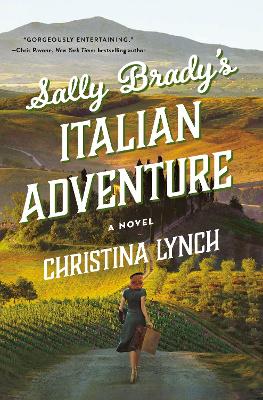
chymerra
Sally Brady is used to overcoming the odds. Her parents, having five children, sent Sally to California in 1931. After living on the streets for a while, Sally happens to jump into the car of a Hollywood movie star. That movie star decides to adopt Sally. When the movie star gets divorced, about five years after adopting Sally, she moves to Europe and takes Sally along. That is how Sally ended up in Italy when it closed its borders and detained any press/foreigners that remained. After helping a young Jewish girl escape, Sally is stranded in Italy. Will Sally be able to escape?
I am a sucker for a good World War II story and usually read everything I can about that war. So, when I saw that Sally Brady’s Italian Adventure was up for review, I knew I wanted to read it. And I am glad I did. This book was terrific.
Sally Brady’s Italian Adventure is a fast-paced book. The pacing of the storyline was perfect for this book. There was some lag towards the middle of the book (around when Sally was in prison), but it didn’t affect my enjoyment of this book.
Sally Brady’s Italian Adventure takes place mainly in Italy. But there are excursions to Prague, Switzerland, and the United States.
The main storyline of Sally Brady’s Italian Adventure is centered around Sally Brady and, you guessed it, her adventures in Italy (and in life). Sally was a larger-than-life character who could think fast and use her wits to keep herself alive in wartime Italy. This storyline captured and kept my attention.
The author featured two other storylines in Sally Brady’s Italian Adventure. They centered around Lapo, an Italian writer and farmer, and Alessandro, Lapo’s son and a soldier. These were the more serious of storylines, and they were the storylines that I enjoyed reading the most. The writer had Lapo and Alessandro witness the horrors of an unstable dictator and a war neither wanted to be involved in. Those two storylines were as well written as Sally’s.
The author told Sally Brady’s Italian Adventure through the 1st person POV of Sally and the 3rd person POV of Lapo and Alessandro. Usually, I’m not too fond of it when there is more than one POV and more than one storyline. But, in this case, I liked it.
I liked Sally. The author did write her, at first, as a silly young girl who didn’t take life seriously. But, as the book went on, I saw glimpses of a more serious Sally. It wasn’t until she met Clio and helped Clio’s granddaughter escape that Sally’s true nature showed through. She was one of the bravest characters in the book.
I liked Lapo. As a parent, I understood why he did what he did. I would do anything to ensure the safety of my children too. I felt awful every time I read his chapters because I could see his prison being more and more constricted by Mussolini.
Alessandro had the most exciting storyline, in my eyes. He was anti-Fascist but had to swallow his beliefs while in the military. Alessandro couldn’t understand, at first, why Lapo was kissing Mussolini’s butt, which made him angry (I would have been too). His time in the military almost destroyed him. The scene where he finally meets Sally is pivotal because it shows how low he was.
The end of Sally Brady’s Italian Adventure was interesting. I felt awful for Sally when she finally went home to her family. Her father was a piece of freaking work, that’s for sure. There was a twist at the end of the book that surprised me. I was with Sally when I thought a certain someone had died. To have him pop up like that had me react as Sally did.
I recommend Sally Brady’s Italian Adventure to anyone over 16. There is mild language, fade to black sexual situations, and moderate to graphic violence.
Many thanks to St. Martin’s Press, NetGalley, and Christina Lynch for allowing me to read and review Sally Brady’s Italian Adventure.
